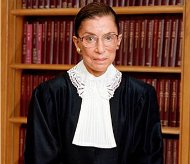6/24/2011
US Supreme Court Confirms Confrontation Right in Radar, DUI CasesUS Supreme Court decision in drunk driving case has wide-ranging implications for automated enforcement.

In a decision that has wide-ranging implications for photo enforcement, speeding tickets and driving under the influence of alcohol (DUI) charges, the US Supreme Court yesterday reconfirmed the Sixth Amendment right to confront one's accuser applies to analysts who claim to have certified evidence from a machine. The 5-4 decision concluded that "stand-in" expert witnesses are not a substitute for the individuals who actually conducted the tests. The decision broadens the applicability of the landmark Melendez-Diaz ruling from 2009, which has already led to appellate division cases in four California counties to throw out red light camera evidence.
The high court examined the case of Donald Bullcoming whose vehicle rear-ended a truck belonging to Dennis Jackson in Farmington, New Mexico on August 14, 2005. Jackson went to exchange insurance information with Bullcoming and noticed that the man smelled of alcohol. Bullcoming fled the scene on foot before police arrived, but Officer Marty Snowbarger caught up to him and arrested him for DUI. After a breath test was refused, Snowbarger obtained a warrant to take Bullcoming's blood. Forensic analyst Curtis Caylor's test of this sample showed a blood alcohol content (BAC) of 0.21, a result that served as the primary evidence against Bullcoming at trial.
The blood testing process is performed by a gas chromatograph machine but remains subject to human error. The court noted a "fairly complex" Colorado lab mistake systematically produced high BAC readings for 206 defendants. Caylor did not testify at trial because he had been put on unpaid leave from his job for an unspecified reason. Instead, Gerasimos Razatos testified regarding the results which he had neither observed nor reviewed.
The high court examined the question of whether a lab report could be introduced as evidence by an "expert" who did not actually conduct the tests in question. The prosecution argued that the gas chromatograph machine was the accuser in the case and that Caylor simply wrote down the result without exercising independent judgment. For that reason, Razatos was an equivalent substitute. The court disagreed.
"Suppose a police report recorded an objective fact -- Bullcoming's counsel posited the address above the front door of a house or the read-out of a radar gun," Justice Ruth Bader Ginsburg wrote for the majority. "Could an officer other than the one who saw the number on the house or gun present the information in court -- so long as that officer was equipped to testify about any technology the observing officer deployed and the police department's standard operating procedures? As our precedent makes plain, the answer is emphatically 'No.'"
The court majority noted that using a surrogate witness would conceal any lapses or lies on the part of the certifying analyst. It also noted that the burden on the prosecution from the requirement of live testimony could have been cured by having Razatos retest the blood sample, which was preserved in accordance with New Mexico law.
"As a rule, if an out-of-court statement is testimonial in nature, it may not be introduced against the accused at trial unless the witness who made the statement is unavailable and the accused has had a prior opportunity to confront that witness," Ginsburg concluded.
The decision represented a rare coalition of the most liberal and most conservative members of the court. Ginsburg and President Obama's nominees to the court, Justices Sonia Sotomayor and Elena Kagan, were joined by Justices Antonin Scalia and Clarence Thomas.
A copy of the decision is available in a 275k PDF file at the source link below.


